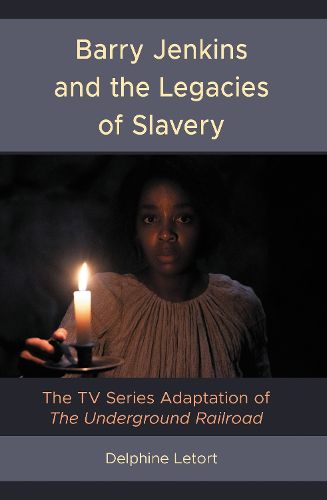Readings Newsletter
Become a Readings Member to make your shopping experience even easier.
Sign in or sign up for free!
You’re not far away from qualifying for FREE standard shipping within Australia
You’ve qualified for FREE standard shipping within Australia
The cart is loading…






In this book, Delphine Letort examines the plots and ploys that intermingle fiction and history in Barry Jenkins' television adaptation of The Underground Railroad, allowing viewers to experience enslavement and flight through the eyes of the female protagonist, Cora. Letort demonstrates how the fusion of imaginary and real elements underlies a poetic visual and narrative style to guide viewers' emotional and epistemological understanding of the past. She posits that another imagery of enslavement can be created-one that does not position the black woman at the margins of slavery cinema and history-as the mise-en-scene of the underground as a symbolic space representing the hidden and the repressed opens new fictional possibilities for imagining the intimate life of the enslaved. Ultimately, this book reveals how the serial format proves instrumental in transforming the gaze on the racial subject, using repetition and difference from one episode to the next to prompt new ways of seeing. Scholars of film and television studies, popular culture, history, and critical race theory will find this book of particular interest.
$9.00 standard shipping within Australia
FREE standard shipping within Australia for orders over $100.00
Express & International shipping calculated at checkout
Stock availability can be subject to change without notice. We recommend calling the shop or contacting our online team to check availability of low stock items. Please see our Shopping Online page for more details.
In this book, Delphine Letort examines the plots and ploys that intermingle fiction and history in Barry Jenkins' television adaptation of The Underground Railroad, allowing viewers to experience enslavement and flight through the eyes of the female protagonist, Cora. Letort demonstrates how the fusion of imaginary and real elements underlies a poetic visual and narrative style to guide viewers' emotional and epistemological understanding of the past. She posits that another imagery of enslavement can be created-one that does not position the black woman at the margins of slavery cinema and history-as the mise-en-scene of the underground as a symbolic space representing the hidden and the repressed opens new fictional possibilities for imagining the intimate life of the enslaved. Ultimately, this book reveals how the serial format proves instrumental in transforming the gaze on the racial subject, using repetition and difference from one episode to the next to prompt new ways of seeing. Scholars of film and television studies, popular culture, history, and critical race theory will find this book of particular interest.